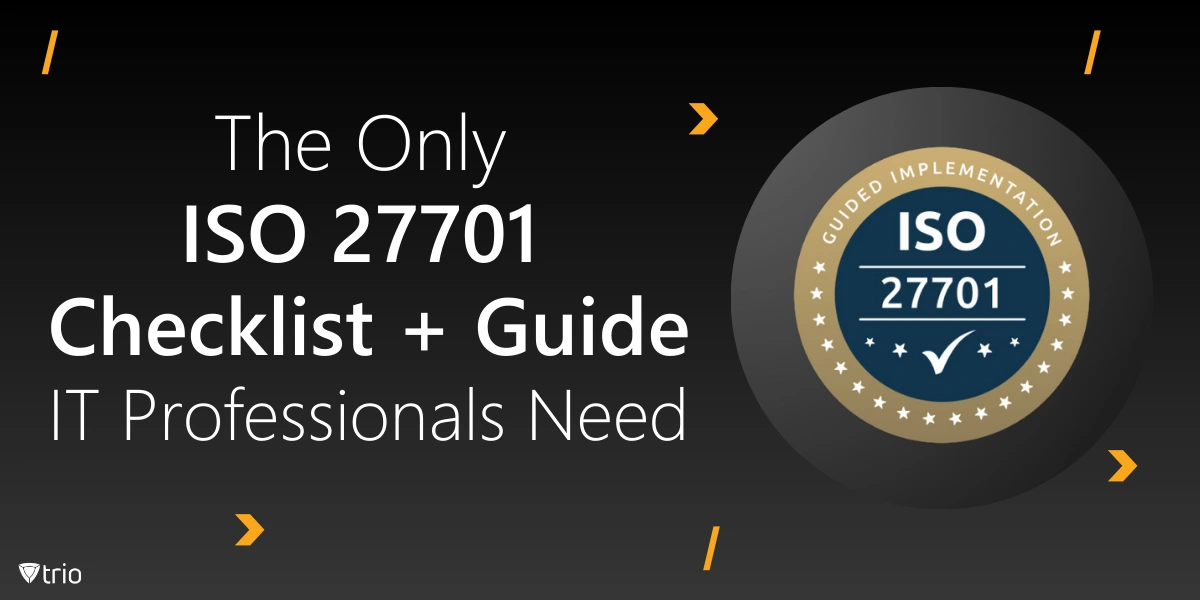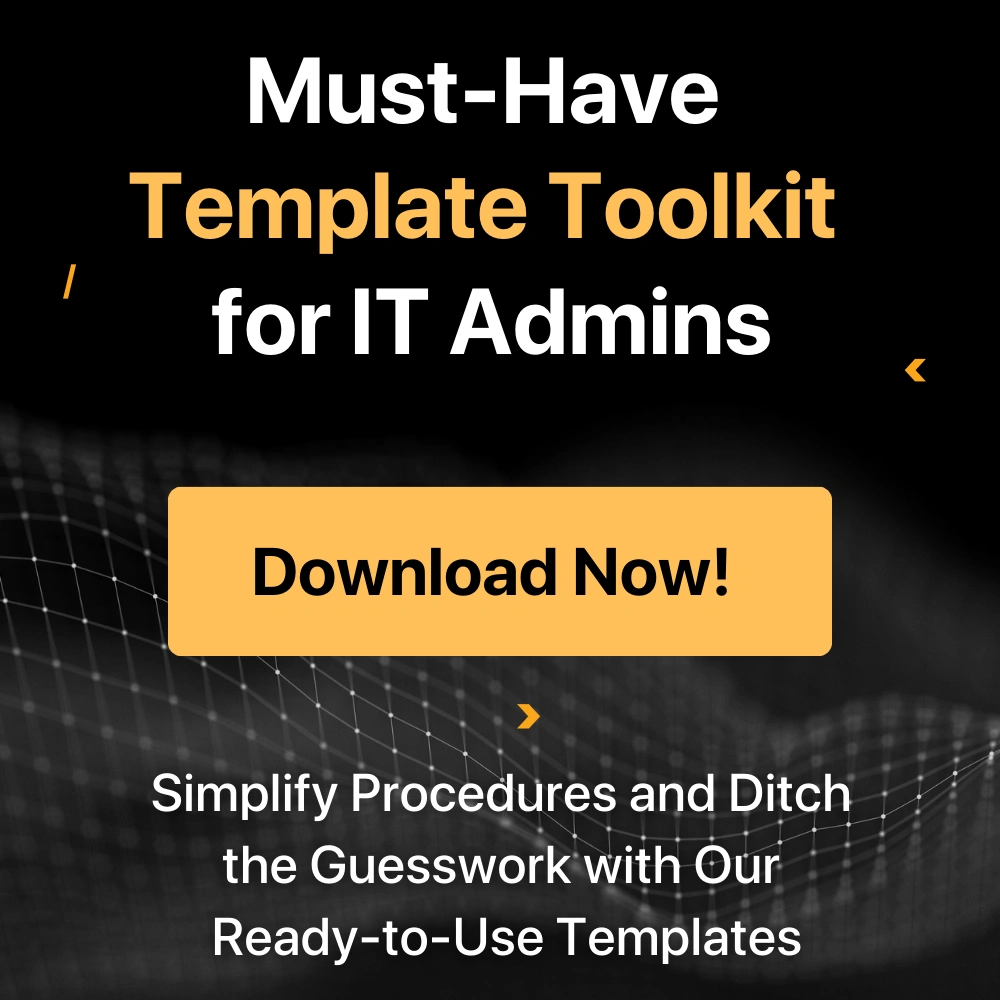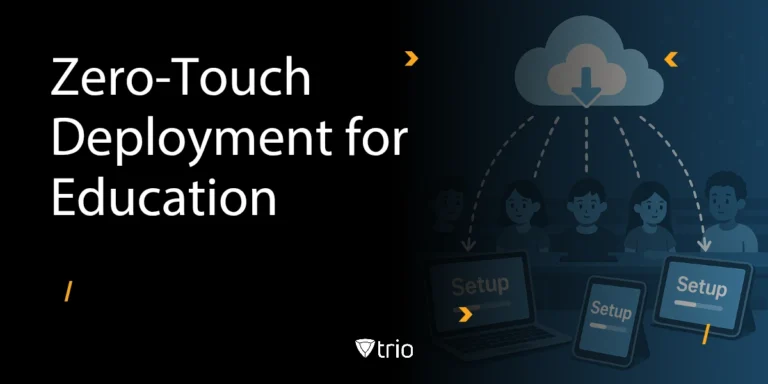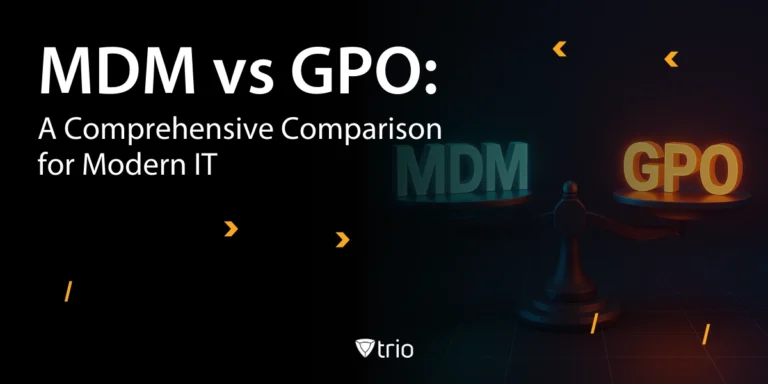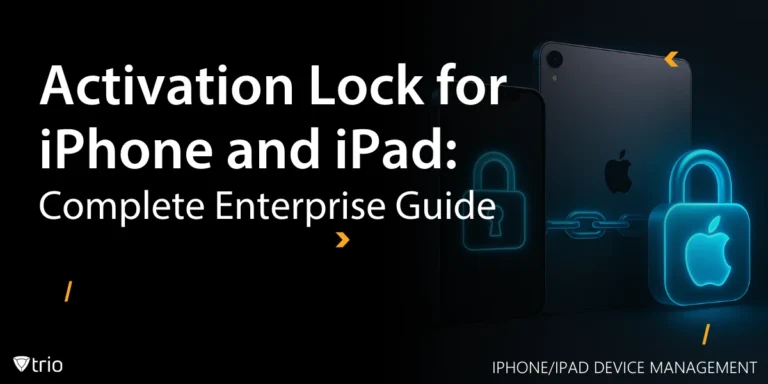With data breaches and privacy concerns on the rise, organizations need stronger frameworks to protect sensitive information. ISO 27701 extends ISO 27001 by adding privacy-specific controls, helping businesses manage personally identifiable information (PII) and comply with global regulations like GDPR, CCPA, and more. But how can IT teams implement these requirements efficiently—without drowning in complexity?
This guide breaks down the ISO 27701 checklist into practical steps, with a focus on Mobile Device Management (MDM) as a key enabler for compliance. You’ll learn how MDM solutions can help enforce privacy controls, secure PII, and streamline audits; whether you’re pursuing certification or simply strengthening your Privacy Information Management System (PIMS).
TL;DR
ISO 27701 extends ISO 27001 with privacy controls for PII management.
MDM (Mobile Device Management) operationalizes privacy rules at the device level.
Benefits: Compliance, reduced breach risk, smoother audits, customer trust.
Blog includes: 10-step checklist, industry use cases, pitfalls, and a downloadable guide.
Why ISO 27701 Matters for IT & Security Teams
In a world where data breaches make headlines daily, ISO 27701 has emerged as the global gold standard for privacy management. It builds on ISO 27001’s security principles, adding specific controls for Personally Identifiable Information (PII). For IT and security teams, this is not just a compliance checkbox—it’s a blueprint for safeguarding data, managing privacy risk, and earning customer trust.
Key Reasons:
- Compliance: Aligns privacy practices with GDPR, CCPA, HIPAA.
- Risk Mitigation: Identifies and closes privacy vulnerabilities.
- Operational Efficiency: Centralizes privacy and security controls.
- Customer Confidence: Demonstrates commitment to data protection.
ISO 27701 Compliance Checklist – MDM-Enabled + Free Sample
For IT teams implementing ISO 27701, theory isn’t enough; you need actionable steps that connect privacy requirements to your daily operations. That’s why we’ve built this complete ISO 27701 checklist directly into this guide, with MDM-specific callouts where mobile device management strengthens compliance. To enhance the usability of this checklist, we’ve provided a free downloadable version that you can customize and print.
Scope Definition
Clearly define the departments, assets, and third parties handling PII, making sure to include all BYOD devices in the scope.
Roles & Responsibilities
Appoint a Data Protection Officer (DPO) and assign clear IT versus business roles for device compliance management.
Privacy Policy Development
Push updated privacy policies to every managed device via MDM, and log user acceptance for audit readiness.
PII Controllers & Processors
Maintain up-to-date contracts with third-party processors and use MDM policies to restrict their device access.
Data Subject Rights
Offer self-service portals for access and deletion requests, and enable selective wipe on BYOD devices.
Incident Response
Automate breach notifications and log device activity around incidents.
DPIAs
Conduct impact assessments for high-risk processing activities, testing MDM geo-fencing/location policies before full rollout.
Training & Awareness
Deliver privacy-focused training modules via managed devices.
Compliance with Regulations
Use MDM to enforce encryption, VPN connections, and timely patching.
Monitoring & Auditing
Export timestamped device compliance logs directly from the MDM console.
Want to have an easy checklist to go through? Make sure to download our free version here:
Deep Dive: MDM Features That Strengthen ISO 27701 Compliance
While ISO 27701 outlines what needs to be done, MDM provides the how.
Key Features:
- Geo-Fencing: Restrict access to sensitive apps/data based on physical location.
- Role-Based Access Control (RBAC): Limit PII access by job function.
- BYOD Privacy Controls: Containerize work apps to prevent personal data tracking.
- Offline Handling: Queue wipe or lock commands until devices reconnect.
MDM-Driven ISO 27701 Use Cases
| Industry | Privacy Requirement | MDM Implementation Example |
|---|---|---|
| Healthcare | HIPAA device compliance | Geo-fence patient data apps within hospital network |
| Banking | PCI-DSS encryption | Enforce encryption + disable copy/paste from finance apps |
| Retail | PII in loyalty apps | Push privacy policy updates to all store tablets |
| Field Services | GPS-enabled workflows | Limit location data collection to work hours only |
Case Study: Mid-Sized Insurance Firm
A 300-employee insurance company in Europe faced GDPR audit challenges due to unmanaged BYOD devices. By deploying MDM:
- Enabled Android Work Profiles to separate work and personal data.
- Geo-fenced claims apps to office locations.
- Automated compliance reports for regulators.
Results:
- Achieved ISO 27701 certification 3 months early.
- Cut audit prep time from 2 weeks to 3 days.
- Reduced BYOD privacy complaints by 40%.
Common Mistakes in ISO 27701 + MDM Implementation
- Policy without Enforcement: Written policies not mapped to device rules.
- Over-Tracking in BYOD: Violates employee privacy; use containerization.
- Skipping Training: Leads to unintentional policy breaches.
- Ignoring OS Limitations: e.g., iOS background location prompts.
Integrating MDM with Privacy by Design
ISO 27701 encourages “privacy by design.” MDM can embed privacy into operations from day one:
- Pre-configured device templates with minimal permissions.
- Automated blocking of risky apps.
- Enforcing least privilege access policies.
- Leveraging MDM Reports for Improvement
MDM analytics provide:
- Device compliance scores.
- Incident frequency by device type.
- Trends in delayed updates.
These insights help refine privacy controls and training priorities.
MDM and Third-Party Risk Management
PII often flows through vendor devices. MDM helps:
- Enforce security profiles for contractor devices.
- Disable access immediately after contract termination.
- Monitor vendor compliance through dedicated MDM groups.
Conclusion
ISO 27701 sets the privacy framework; MDM enforces it at scale. Whether you manage 50 devices or 5,000, aligning privacy policies with device controls is the fastest route to certification and trust.
👉 Start your ISO 27701 compliance journey with a free trial of Trio MDM.
👉 Or book a demo to see MDM privacy controls in action.
Frequently Asked Questions
While ISO 27001 focuses on information security, ISO 27701 adds privacy-specific controls for managing Personally Identifiable Information (PII). Think of it as:
- ISO 27001: Protects data from breaches.
- ISO 27701: Ensures privacy (e.g., GDPR/CCPA compliance) by governing how PII is collected, stored, and processed.
Absolutely. Trio MDM automates critical privacy controls:
- Enforces encryption (protects PII on devices)
- Manages BYOD securely (work/personal data separation)
- Generates audit-ready reports (proves compliance)
Trio’s prebuilt ISO 27701 templates auto-configure:
- Role-based access (limit PII exposure)
- Geo-fencing (restrict data by location)
- Consent logging (track policy acceptance)
Use MDM containerization:
- Create Android Work Profiles or iOS Managed Apps.
- Apply policies only to work apps/data (e.g., auto-wipe work container if device leaves geo-fence).
- Explicitly exclude personal activity from monitoring.
Offline device management. MDM solutions like Trio:
- Queue remote wipes for disconnected devices.
- Cache privacy policy updates until devices reconnect.
- Log offline access attempts to PII.
Get Ahead of the Curve
Every organization today needs a solution to automate time-consuming tasks and strengthen security.
Without the right tools, manual processes drain resources and leave gaps in protection. Trio MDM is designed to solve this problem, automating key tasks, boosting security, and ensuring compliance with ease.
Don't let inefficiencies hold you back. Learn how Trio MDM can revolutionize your IT operations or request a free trial today!
